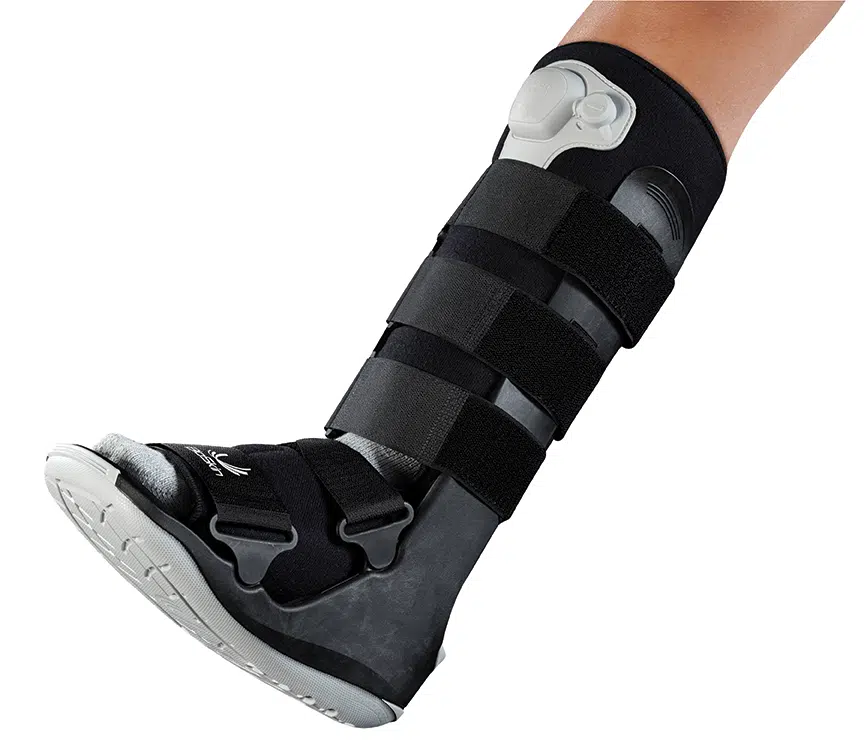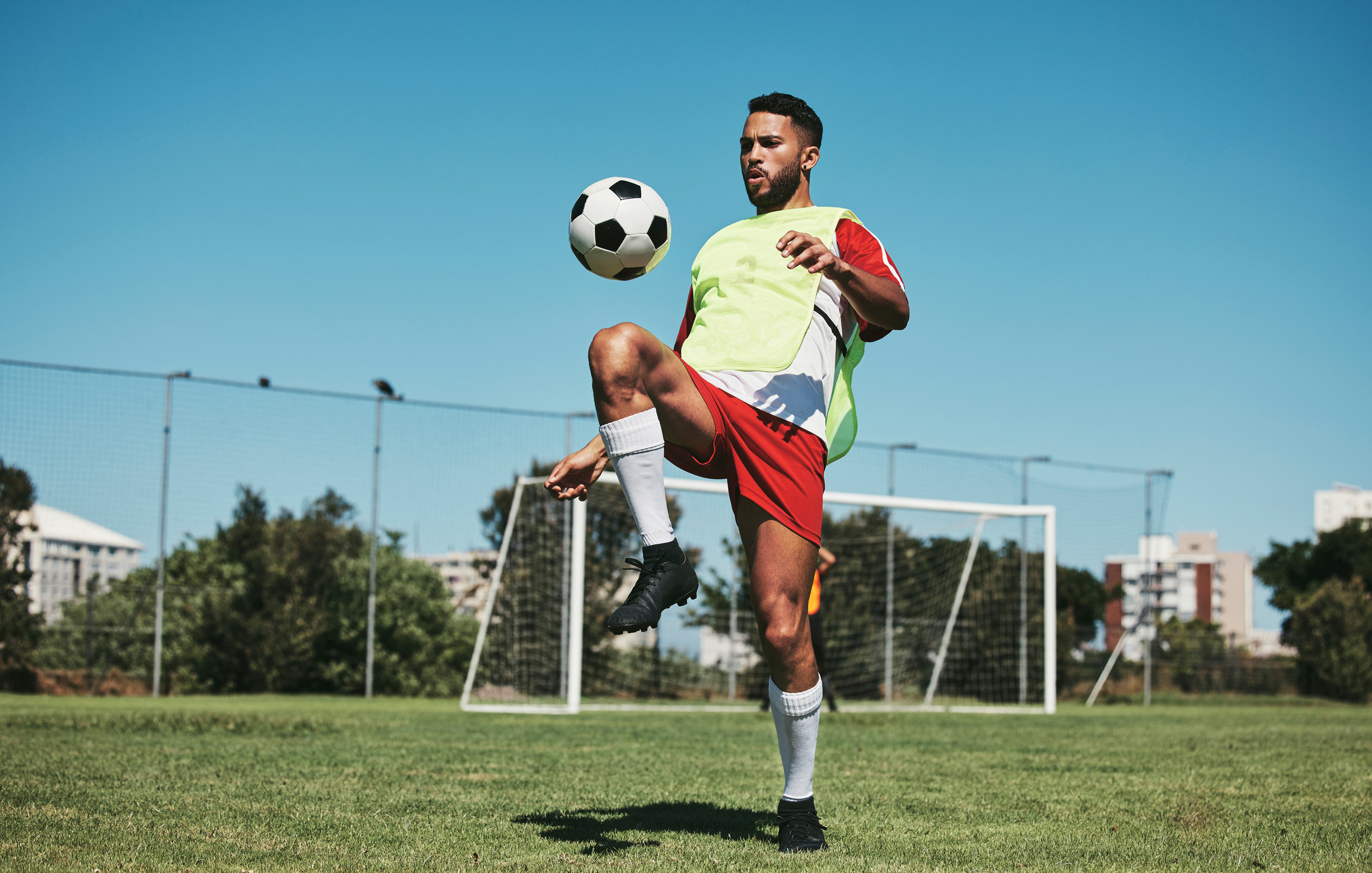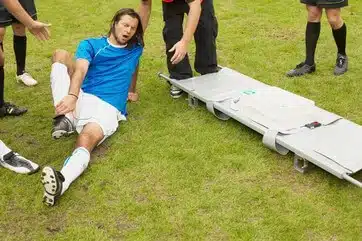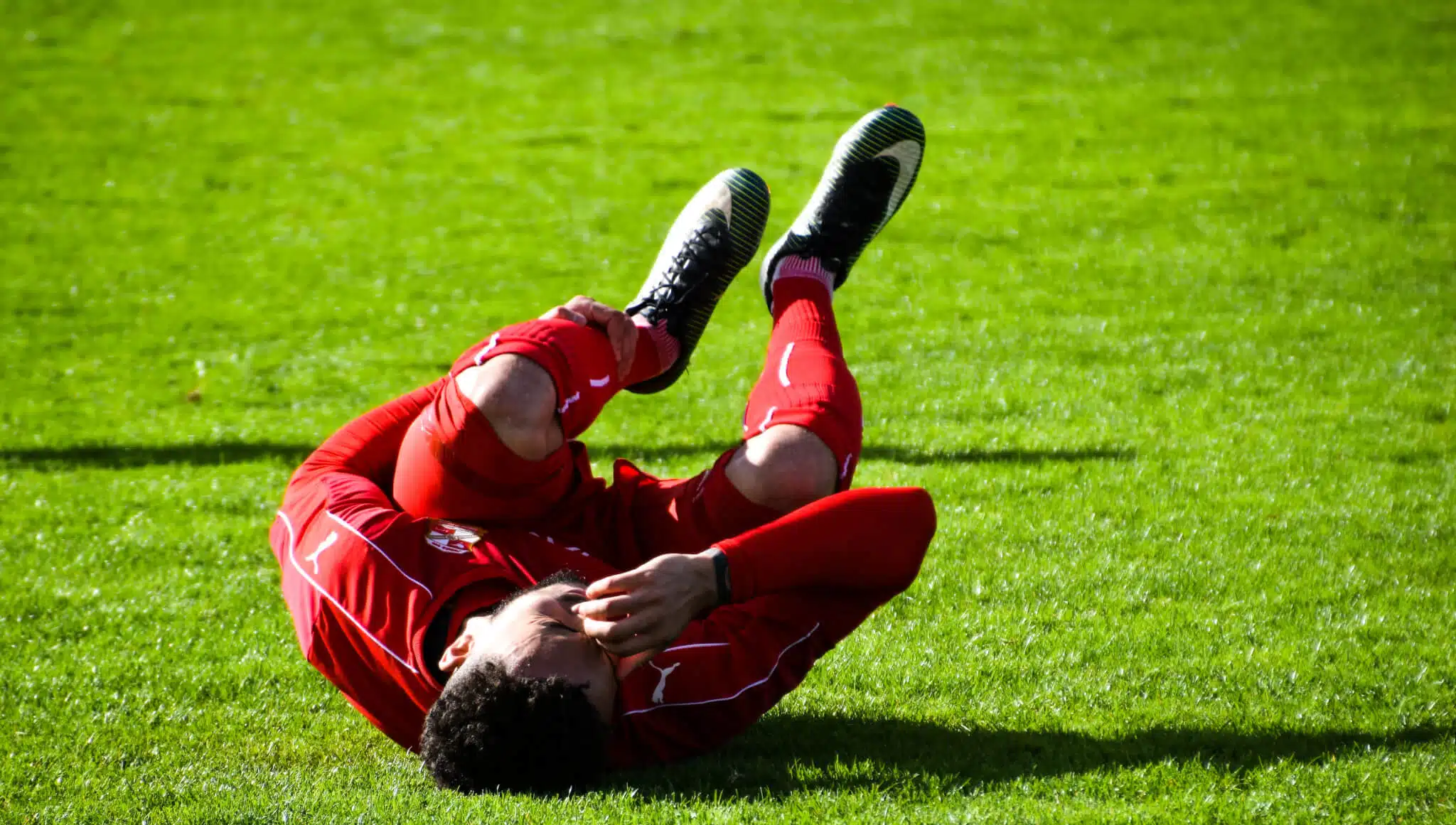4 Walking Boot Questions & Answers
A walking boot, also known as a walking brace, is a special type of medical footwear that doctors use to protect the foot and ankle areas after the patient has experienced an injury or after a surgical intervention in these areas. The primary goal of these shoes is to stabilize the foot and allow it to heal. It can also redistribute weight bearing pressure from one part of the foot to another. The reduced pressure gives an opportunity to heal more quickly. In this post we cover 4 of the most common walking boot questions from individuals who are preparing to start wearing this type of footwear, and provide some suggested answers.
The specific injuries for which a walking brace may be recommended include stress fractures or other fractures of the shin, foot & ankle. Health professionals can also effectively treat ankle sprains, injuries to the achilles or torn calf muscles using a walking boot. In addition, your doctor may suggest wearing one if you are suffering from shin splints.
Walking Boot Taxonomy
Walking boots can be either tall or short. The tall version can extend as far as the knee while the short boot may perhaps only reach halfway between the foot and knee. The tall version is more effective at immobilizing the lower foot muscles but may also be less comfortable to wear, particularly for shorter individuals. The shorter version provides greater wearing comfort and is generally easier to walk in, but will also generally provide less support and stabilization of the foot and lower ankle.
Another important classification of walking boots is pneumatic vs. non pneumatic. Pneumatic boots use compressed air to inflate the lining of the boot and provide additional support and compression to the foot. The effect of this compression is better control of any inflammation that may be present, as well as greater relief from pain.
Non pneumatic boots, on the other hand, do not use air and are more similar to a cast boot. They will not provide the compression and pain relief of their pneumatic counterparts but they are a more affordable option.
In most cases your doctor will decide which of these alternatives (pneumatic or non pneumatic, tall or short) is better for you in light of your particular injury and other circumstances.
Walking Boot Questions
Should I wear my walking boot to bed?
This is one of the most common walking boot questions among patients who are just starting to wear one. Although you should follow your doctor’s advice in any situation, the normal practice is to wear the boot while sleeping. However, loosening the straps that secure the boot will increase wearing comfort and allow you to sleep better.
Another good tip on a related subject is to sleep with pillows surrounding the boot in order to support the foot and avoid its displacement. It will also cushion the foot against any external impacts that may aggravate the injury.
If you wear the boot throughout the day and are concerned about keeping your bedclothes clean, you could surround your foot with an old pillow that you do not need to use anymore. This will provide support and protection while maintaining hygiene.
Can I drive while wearing my walking brace?
This is another commonly asked walking boot question. In general while wearing a walking boot on the left foot is generally permissible, studies have shown that wearing one (or other similar types of footwear) on the right foot can adversely affect driving performance. In particular, a 2016 study by the Journal of Foot & Ankle Surgery found that patients wearing a walking boot on the right foot exhibited significantly slower braking response times compared to individuals not wearing such a device. The study also found that patients wearing a walking boot tended to simultaneously press both accelerator and brake while driving. In general, the impaired neuromuscular control from which patients who are wearing a boot may be suffering will make it more difficult for them to quickly and accurately find the correct pedal in emergency situations.
Conclusion: although you should always follow the guidance of your doctor, the normal recommendation in response to this walking boot question is to avoid driving while wearing one if you would have to wear it on your right foot.
Should I use crutches while wearing the walking boot?
In some cases, doctors may advise their patients not to place any weight on the foot while wearing the shoe. These patients will need to continually use crutches to keep weight off the foot. In particular, if the patient will not be wearing the boot to bed, he or she should be careful to keep the crutches by the bedside and in easy reach. This will reduce the risk that the patient may accidentally place weight on the foot while getting into or getting up from bed.
Should I wear the boot while showering?
The priority should be to avoid putting weight on the unprotected foot at any time, as this could aggravate the injury. If you are not comfortable wearing the boot in the shower, one suggested approach for bathing is to remove the boot and sit on a chair in the shower in order to take the weight off the foot. Alternatively, if you would prefer to leave the boot on while showering, you could keep it dry by covering it with a plastic bag and using adhesive tape to create an airtight seal.
Conclusion
In this post, we have examined 4 common walking boot questions from patients preparing to wear this type of footwear for a period. Although the suggestions above will probably be appropriate for most of the patients who are about to start wearing a boot, we would (as always) suggest following your doctor’s advice in order to ensure that your treatment proceeds as intended.








Hello. I am six weeks postop from Achilles tendon rupture repair surgery. My cast was taken off this week and I am in a tall walking boot. However I cannot bear weight just yet so I’m continuing to use my scooter. I started PT two days after the cast was removed and the therapist was able to get me to walk a few steps with the aid of a walker. I do practice that at home as well. Slow and painful but making progress. My question is this. Since I’m still using the scooter at home, is there a therapeutic reason that I need to keep the boot on? (I know it protects the foot if I were to tip on the scooter). I’m finding that I’m not wearing the boot at all unless I’m doing the at home walking PT.
The information on the website states that the boot stabilises the foot and lower leg. Even though you may not be actually walking, I think your foot still needs to be stabilised. This is because undesirable movements can happen even when you’re not walking. That this is the case is borne out by the fact that it is recommended that the boot be kept on as much as possible, even when washing/bathing and when in bed (it is mentioned in the information on the website somewhere about keeping the boot on in bed and in the bath). By all means you can double check with your orthopaedic doctor. But my advice would be to keep the boot on even though you’re using the scooter, unless your orthopaedic doctor advises that it would be OK to wear it only when doing the walking PT. You should also clarify with your orthopaedic doctor how long after removal of the cast the boot normally needs to be worn for.
I had surgery 8 weeks ago.. a rod was put on out side of ankle and leg and metal plate were put on the inside of ankle . I broke the fibia tibia and ankle . I wasn’t told to wear the boot all the time. It is less painful to walk without it. Should I still use it
Hello – As we are not aware of all the details of your case, we would suggest you rely on your doctor’s advice in this matter.
Thanks.
Hello Kim,
Orthopaedic injuries are not my area of expertise. What instructions were you given by your doctors? When were you advised by them to wear a cam boot? If you’re using the cam boot based on your own decision, I wouldn’t use it all the time until you’ve sought advice from the doctors who did your surgery.
My initial thought is that, if you’re feeling more pain when you use the boot than when you don’t, the risks of using the cam boot probably outweigh the benefits. I would advise you to precisely follow your doctors’ instructions until you speak to them about when you should wear the cam boot.
Hello Michelle,
The purpose of the Cam Boot is to stabilise your foot and to reduce the pain you feel when walking. If you’re still having pain weight bearing when wearing the boot and using a cane or crutches, standing without the boot on is likely to be at least as painful if not more so. I think you were advised you could take off the boot in bed at night and when in the shower because in bed you don’t need to stand on the foot and in the shower you can’t wash your foot and lower leg properly with the boot on. When weight bearing on the foot in the shower you should put as little weight as possible on the foot to minimize the pain. You will not have a choice since you can’t use a cane or crutches while in the shower. You shouldn’t need to stand on the foot for longer than 15-20 minutes while in the shower. As your foot heals, you will find that the pain you feel when you stand on it gets less.
I hope you find this advice helpful.